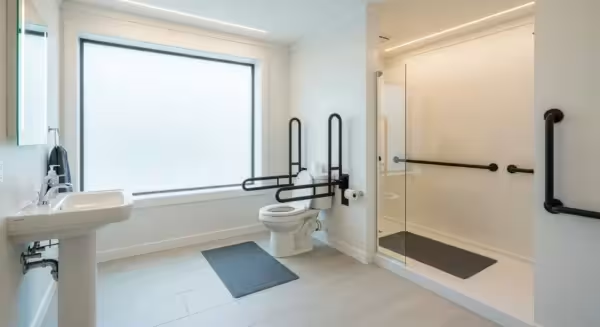
Finding Your Path: Exploring the Options for a Simpler Life
The first step in this exciting process is figuring out what “smaller” and “more comfortable” actually mean to you. Your ideal senior living situation is deeply personal, and thankfully, there are more options today than ever before. Comfort isn’t just about square footage; it’s about community, security, and lifestyle. Let’s explore some of the most popular paths.
The Smaller Home or Condominium
For many, the ideal move is simply to a smaller version of what they already have. A charming two-bedroom bungalow or a stylish condominium in your current town can be the perfect solution. This allows you to stay close to your established network of friends, doctors, and favorite grocery stores while dramatically reducing your maintenance burden.
Pros: You maintain full independence and home equity. You have the freedom to renovate and decorate exactly as you wish. A condo, in particular, often handles all exterior maintenance and landscaping.
Cons: Even a small home has upkeep. You are still responsible for interior repairs, and if you choose a single-family home, the yard and exterior are on you. It may not offer the same built-in social network as other options.
The 55+ Active Adult Community
These communities are specifically designed for a vibrant, engaged retirement. They consist of single-family homes, townhouses, or condos, but with a wealth of shared amenities. Think clubhouses, swimming pools, golf courses, fitness centers, and a packed calendar of social events and classes. It’s like living at a resort with a neighborhood of your peers.
Pros: A built-in community makes it incredibly easy to meet people and make new friends. Maintenance is typically handled by a homeowners’ association (HOA), giving you a true lock-and-leave lifestyle perfect for travelers.
Cons: HOA fees can be substantial. These communities are age-restricted, which may not appeal to everyone, and you’ll have to abide by the community’s rules and regulations.
Continuing Care Retirement Communities (CCRCs)
A CCRC offers a unique promise: a home for the rest of your life, with care that adapts as your needs change. You typically enter as an independent resident in an apartment or cottage. Should you need it later, you have priority access to on-site assisted living or skilled nursing care. It’s a plan for the future that provides immense peace of mind for both you and your family.
Pros: Long-term security and predictability. You won’t have to move again if your health needs change. They often feature rich social programs and high-end amenities.
Cons: This is the most significant financial commitment, often requiring a large upfront entry fee in addition to monthly service fees. It’s a big decision that locks you into one geographic location and care system.
Renting in a Vibrant, Walkable Area
Don’t overlook the incredible freedom of renting! Imagine living in a modern apartment in a bustling downtown area, within walking distance of restaurants, theaters, parks, and libraries. Or perhaps renting a small cottage near your grandchildren. Renting frees you from the responsibilities of homeownership and the volatility of the real estate market.
Pros: Ultimate flexibility. You have no maintenance worries, and you can move easily if you decide you want to be closer to family or try a new city. It frees up the capital from your home sale for investment or travel.
Cons: You don’t build equity. You’re subject to rent increases and the rules of a landlord. It may not feel as permanent or customizable as owning your own space.















